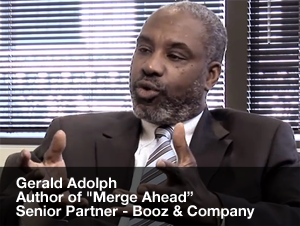
3 Challenges of Capabilities-driven M&A
In a recent video series, Booz & Company’s Paul Leinwand and Gerald Adolph discuss the role of capabilities in M&A and how a capabilities-driven M&A strategy, versus a consolidation-based approach, can produce more successful companies but entails a completely different set of challenges.
Strategic buyers who pinpoint a capability their company needs to develop are more likely to identify the right companies to target. When performing due diligence, it is critical to define how the firm will generate value from the deal. Mr. Adolph asserts that during due diligence, it is important to ask, “Will this acquisition fulfill the mission I want it to, and how do I integrate this new acquisition?”
While the benefits of a capabilities-based M&A deal can be great, the strategy can be more challenging to integrate; organizational factors will either facilitate or prevent a successful integration. Three challenges that always require consideration include:
- Is the transaction in fact a capability-based acquisition? Recognizing the nature of the capability will help you identify organizational areas that will be impacted, integration points that can drive savings, and spaces that will generate significant value for the firm.
- Planning for implementation. In some cases, strategic buyers may purchase a company and simply attach it, leaving it on the side. This is common in pharmaceuticals for example, where a firm can buy a lab and allow it to run independently from the broader organization. Conversely, a particular technology acquisition may need to be integrated throughout an organization to be successful. For example, Apple’s acquisition of the assets of Fingerworks in 2005 ultimately were integrated into Apple’s iPhone and iPad product platforms.
- Integrating the capability. Firms must plan how the capability will be infused into the larger entity. For example, buying a small company to address your firm’s customer responsiveness can create redundancies that must be eliminated or require significant cultural shifts.
Capabilities are difficult to integrate. To ensure success, you must first identify and articulate the capability you seek to acquire. Knowing this helps you ask the right questions, which include:
- Where does the capability currently reside?
- How will it help us grow revenues?
- What capabilities must we preserve?
- What are the overlapping functions?
If there are other key questions to ask as part of executing capabilities-based M&A, please share in the comments below.
Booz & Company partners Gerald Adolph, co-author of “Merge Ahead: Mastering the Five Enduring Trends of Artful M&A” and Paul Leinwand, co-author of “The Coherence Premium” and “The Essential Advantage”.